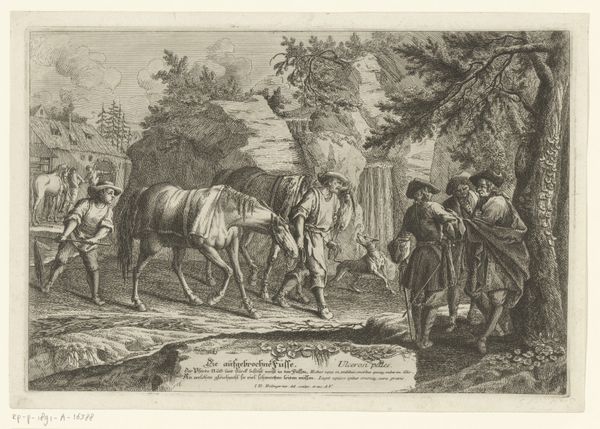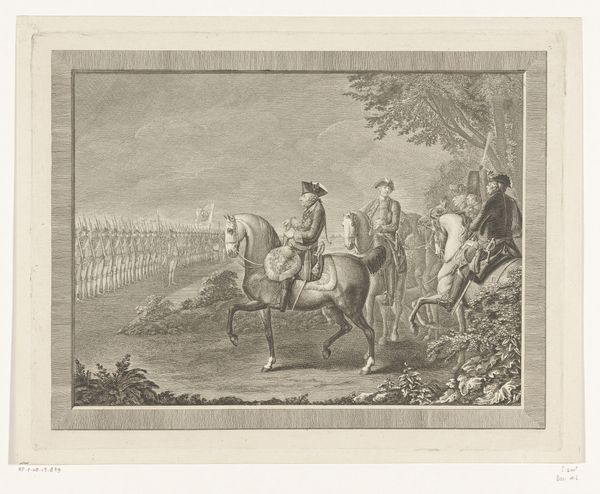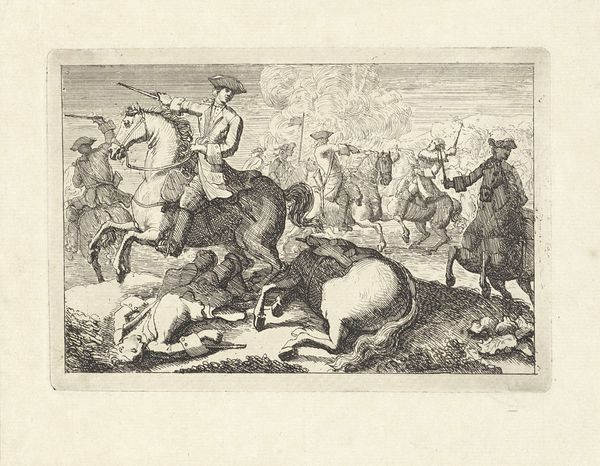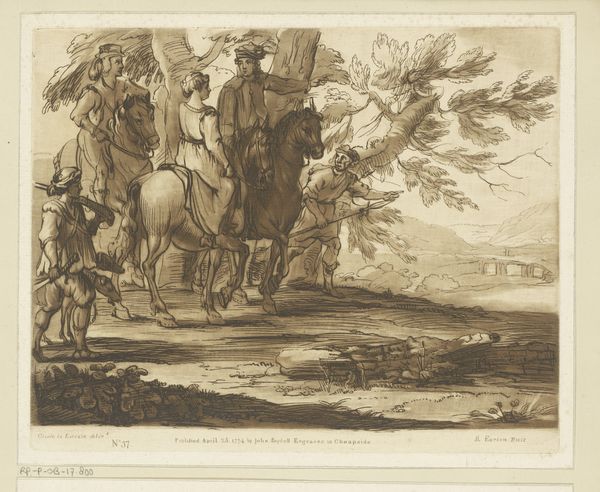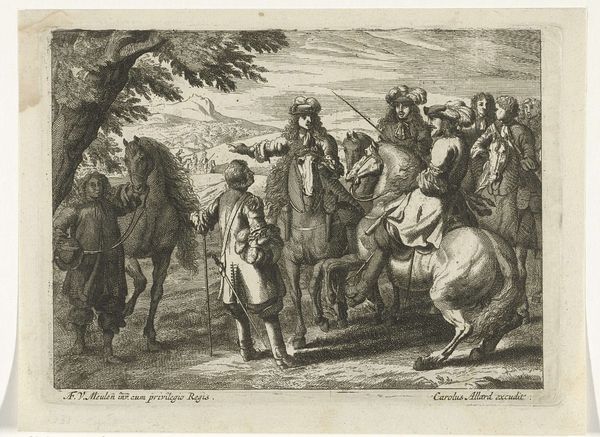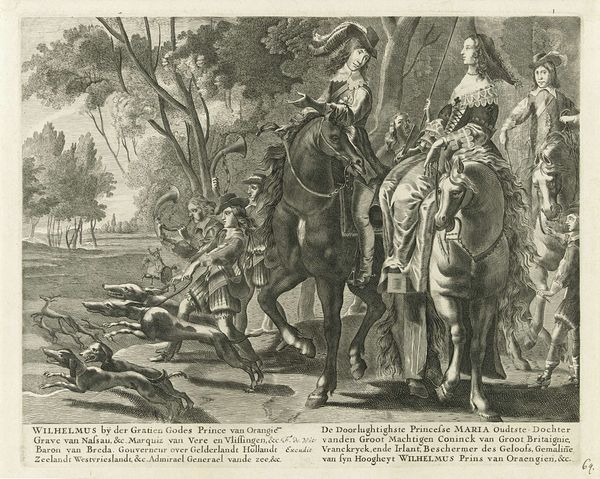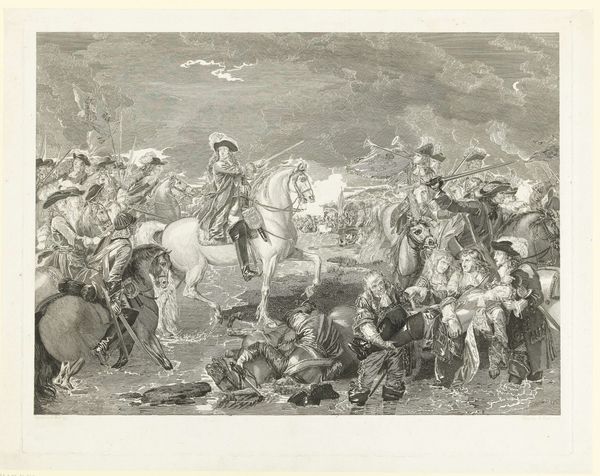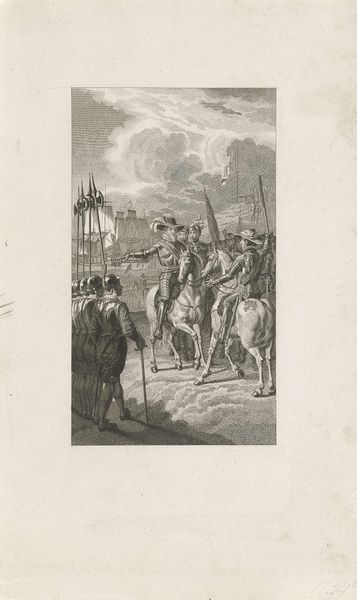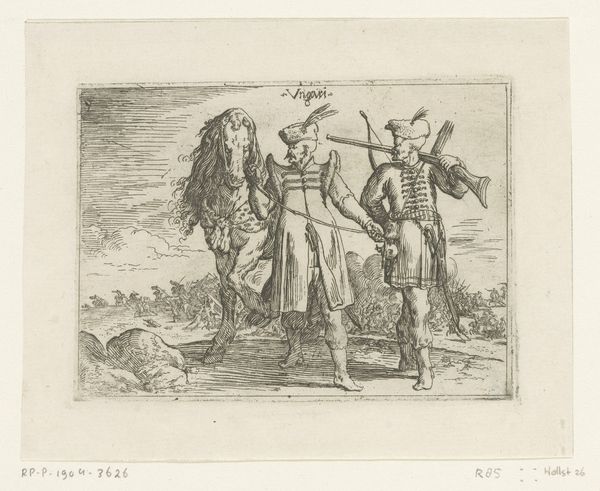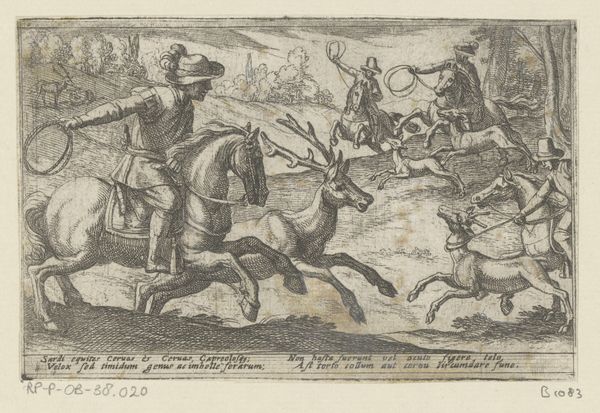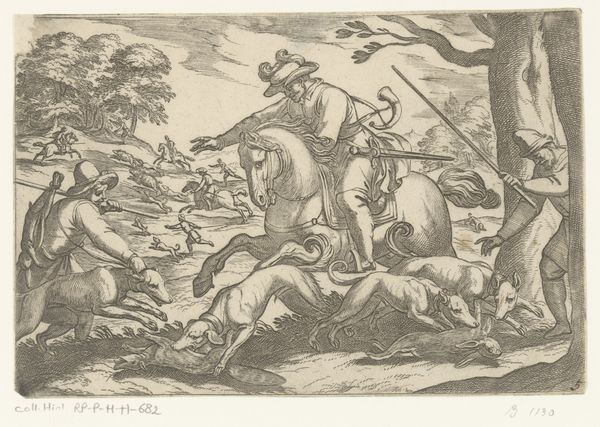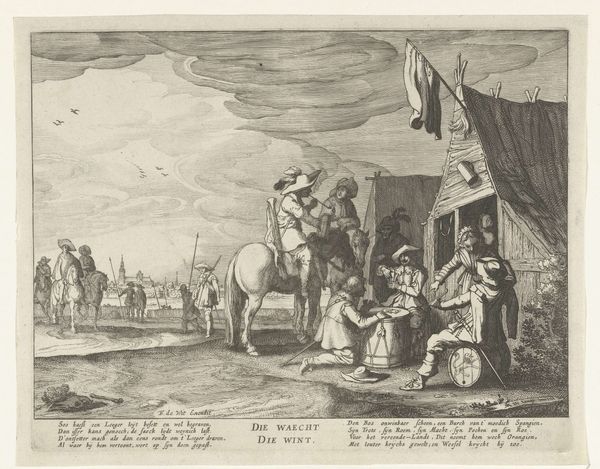
Karel V en Ferdinand te paard; intocht van Ferdinand te Gent in 1635 (nr. 20) Possibly 1635 - 1685
0:00
0:00
pieterdeiijode
Rijksmuseum
print, engraving
#
portrait
#
baroque
# print
#
old engraving style
#
landscape
#
pencil drawing
#
group-portraits
#
history-painting
#
engraving
Dimensions: height 299 mm, width 387 mm
Copyright: Rijks Museum: Open Domain
Curator: Before us is a print titled "Karel V en Ferdinand te paard; intocht van Ferdinand te Gent in 1635 (nr. 20)", rendered possibly between 1635 and 1685 by Pieter de Jode II. The medium here is engraving, showcasing a historical scene. Editor: Immediately, I am struck by the rigid formality, even in this two-dimensional depiction. The light, the arrangement... it conveys authority, but almost oppressively so. The line work seems quite precise. Curator: Indeed. It represents the entry of Ferdinand into Ghent in 1635. Pieter de Jode II captures a moment of political theatre, shaped by the complexities of the Habsburg dynasty. Note the equestrian portraits – symbols of power and nobility carefully curated for public consumption. Editor: Those horses command such attention and take up almost as much space as the central figures. And the angel! Why an angel floating behind Ferdinand? The engraving pushes past the reality of the situation to something overtly allegorical. Curator: It is interesting how he combined printmaking techniques, it shows strong design element skills from his generation. In this print, the angel bestowing a wreath is undoubtedly propagandistic imagery, contributing to the deification of the ruler. Editor: I find the visual weight quite deliberate. The way the figures are positioned, with Charles V receding into the background, subtly suggests Ferdinand's ascendance, while perhaps subtly obscuring political tensions of the period. The artist clearly had a goal in mind. Curator: That's quite insightful. Consider also the composition of the figures at the bottom left bearing flags, contrasting with those on horseback. They speak to societal hierarchies within Ghent. Editor: What strikes me most is the density of information, even with the medium’s inherent constraints. This piece becomes almost a commentary of control that echoes what was happening in the physical world. Curator: I concur. In all, De Jode’s work provides insights into both political and artistic agendas during the Baroque period, reflecting ideas of succession and power through meticulously rendered lines. Editor: Looking at it now, the artwork encourages considering it as more than historical documentation and something closer to a highly strategic symbolic undertaking.
Comments
No comments
Be the first to comment and join the conversation on the ultimate creative platform.
